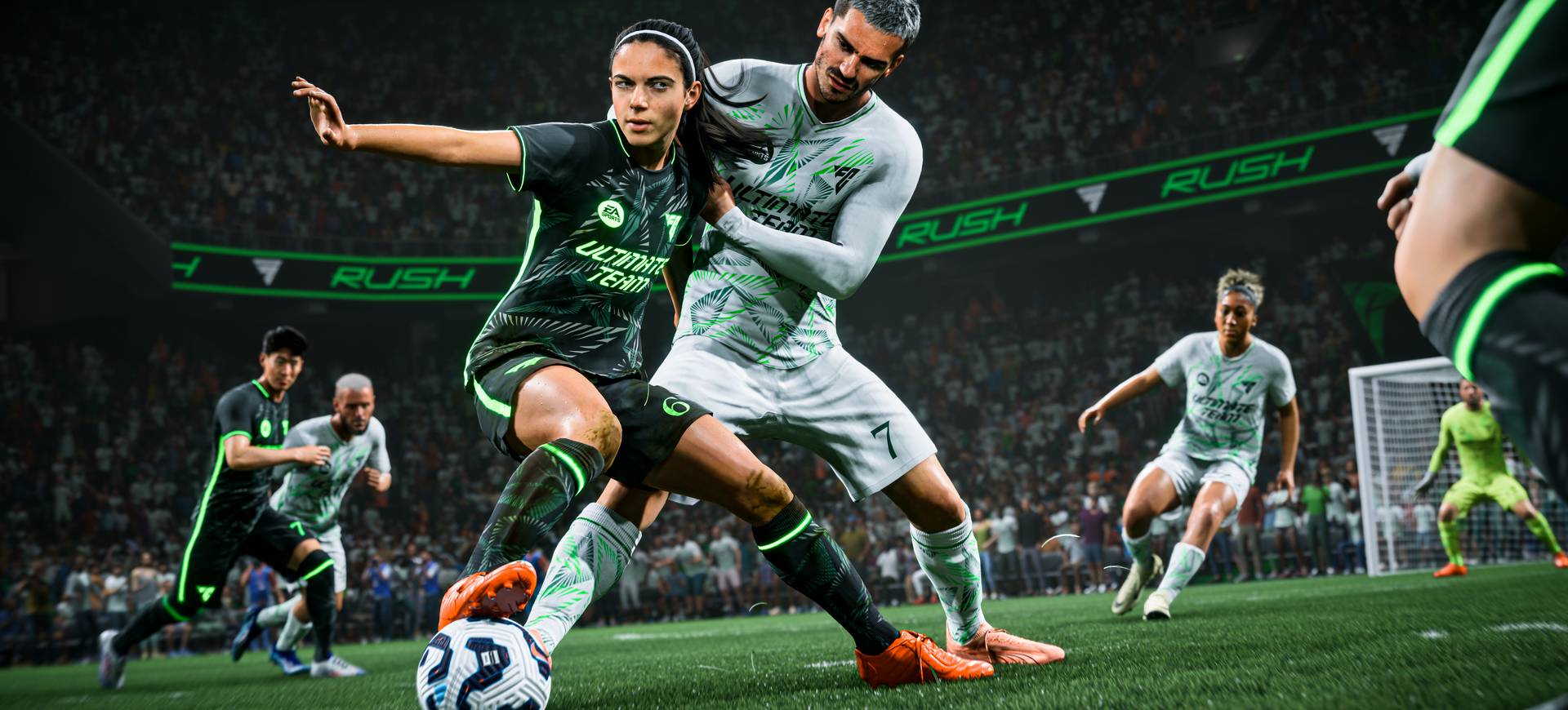Popular Now
Introduction
EA SPORTS FC 25 introduces a new era of realism in football gaming, not through flashier graphics or faster pace, but by revolutionizing something more subtle and strategic—positioning intelligence and defensive AI behavior. Unlike in previous installments, where defenders often acted robotically or overpowered the game’s attacking dynamics, EA FC 25 brings a nuanced approach where positioning, spacing, and contextual AI reactions can determine the outcome of a match.
This article provides an in-depth exploration into how EA SPORTS FC 25 uses advanced positioning algorithms and revamped AI logic to simulate defensive awareness, build-up reactions, and team shape. We’ll break down the mechanics across ten key sections, offering analysis, tips, and examples that go beyond surface-level understanding.
The Philosophy Behind Positioning Intelligence
In EA SPORTS FC 25, the defending meta isn’t just about physicality or speed—it’s about how players read space and threats. EA has built a new system that prioritizes anticipation over reaction, rewarding defenders who position themselves correctly rather than merely chasing the ball.
The system draws from real-world football philosophies like zonal marking, compact shapes, and triangle-based coverage. This affects both AI-controlled and user-controlled defenders, meaning strategic positioning is now a universal requirement, not just a competitive edge.

AI Shape Management and Defensive Structure
One of the standout additions to EA FC 25 is improved defensive shape maintenance. Fullbacks no longer tuck in erratically, and center-backs won’t charge out unless triggered by specific tactical instructions. The result is more realistic line integrity and fewer random gaps.
When switching players, AI teammates now maintain a better defensive line, adapting to formations like 5-3-2 or 4-2-3-1 with greater awareness. The defensive unit contracts or expands depending on the game situation, applying pressure without losing cohesion.
Key Benefits:
-
Smarter zonal spacing between defenders
-
Reduced frequency of overlapping fullbacks when set to “Stay Back”
-
Better coverage against through balls and diagonal runs
The Role of Defensive Awareness Stat
The Defensive Awareness stat in EA SPORTS FC 25 has evolved from being a background modifier into a front-line influencer of behavior. Players with high ratings here are visibly smarter in off-the-ball positioning, tracking late runners or shifting to cover vacated zones.
This stat impacts:
-
How quickly a defender recognizes developing threats
-
Their ability to block passing lanes proactively
-
Lateral coverage when midfielders push forward
Best example: Using someone like Marquinhos or Thiago Silva shows how awareness can compensate for lack of pace—they’re almost always in the right place.
Press Resistance and Player Positioning
EA FC 25 emphasizes press resistance, meaning defenders who panic under pressure are more likely to misposition themselves or mistime clearances. Intelligent defenders, however, adjust their body shape to face the right direction before making a pass or tackle.
This is especially noticeable when pressing with forwards. A poor defensive midfielder may turn into pressure, while a smarter one will shield the ball and pass laterally or backward to retain shape.
Tips for mastering this:
-
Don’t sprint into tackles; let the AI positioning do the work
-
Let players with high Composure and Vision handle buildup under pressure
-
Use passing angles instead of forcing straight-line clears
Situational Reactions and Contextual AI
EA SPORTS FC 25 has introduced a layer of situational awareness into AI behavior. Depending on the context—such as being down by a goal or defending in the 90th minute—AI defenders adjust aggression levels, fallback routines, and pressing triggers.
In Career Mode or FUT, defenders in high-pressure moments are less likely to commit recklessly. Meanwhile, AI players on a high morale or with good stamina may push forward more confidently in late-game transitions.
This dynamic behavior adds realism, but also requires players to:
-
Watch for team morale and fatigue
-
Sub defenders who drop in effectiveness late-game
-
Adjust tactics manually during momentum shifts
Covering for Advanced Wingbacks and Overlapping Runs
With overlapping fullbacks playing a bigger role in modern tactics, EA SPORTS FC 25 allows defensive AI to cover empty wide spaces when needed. CDMs and wide midfielders now occasionally drop into wide lanes when fullbacks overlap.
This behavior is influenced by:
-
Defensive Width setting
-
Custom Instructions on CDMs ("Cover Wing" vs. "Cover Center")
-
Player Work Rates
Important strategies:
-
If using an attacking fullback, assign a “Stay Back” CDM to sweep behind
-
Use 4-4-2 wide or 3-5-2 if you rely on wide players for both attack and defense
-
Watch mini-map indicators of positional swaps and rotations
Anticipating Triangular Passing Patterns
Defenders now have a better ability to read triangular passing setups. In past titles, a one-two pass would confuse the backline, but in EA FC 25, the defensive AI recognizes common passing triangles and repositions appropriately to break the cycle.
The defending shape stretches or compresses accordingly. For example, a CB will momentarily drift toward a short-passing CDM if the LCM pulls wide, preventing the common "drag wide then play central" tactic from working easily.
What this means for gameplay:
-
Holding a mid-block is safer than rushing out
-
Reading passing habits of your opponent leads to natural interceptions
-
Second-man press should be used to delay, not win the ball immediately
Switching Intelligence and Player Handoffs
EA SPORTS FC 25 enhances player switching intelligence, meaning AI defenders now better handle runner handoffs. If you switch off a CB to cover space, the nearby fullback or CDM may now recognize and track the attacker you left.
This dynamic improves the flow of defending and reduces reliance on manual switching. However, it works best under these conditions:
-
Your team has high chemistry (in Ultimate Team)
-
Players involved have good Interceptions and Awareness stats
-
Tactical setup is set to “Balanced” rather than “Constant Pressure”
To make the most of it:
-
Don’t overuse second-man press; trust the AI to absorb pressure
-
Switch earlier, not later, when an opponent begins a run
-
Let AI track runners when defending inside the box
How Fatigue Affects Defensive Positioning
Fatigue in EA FC 25 has a tangible impact on how defenders hold their line. As stamina drops, defenders:
-
React slower to passes
-
Take longer to recover from tackles
-
Shift out of line shape more frequently
This is most noticeable after using High Press or in Extra Time scenarios. Defenders with low stamina start to leave gaps in the defensive block, especially if they have medium or high attacking work rates.
Recommendations:
-
Use substitutions to bring in fresh legs at fullback and CDM
-
Adjust tactics mid-game to lower depth and pressure
-
Monitor stamina bars constantly during close matches

Tactical Cam and Visual Awareness Tools
To help players manage positioning intelligence, EA FC 25’s Tactical Cam offers a better overview of defensive shape. With new overlays and directional indicators, players can anticipate incoming runs and prepare for AI behavior before it happens.
Advanced users use the camera to:
-
Spot unmarked players early
-
Keep an eye on off-ball movement
-
Prepare a manual switch before the opponent sees the gap
Other tools include:
-
Visual cue markers for dangerous runners
-
Tactic refresh indicators showing formation shifts in real time
-
A radar that updates faster with minimal lag for competitive play
Conclusion
Positioning intelligence and AI behavior are the silent heroes of EA SPORTS FC 25’s revamped defensive gameplay. These systems work together to deliver a more realistic, tactical, and immersive football experience where defenders are no longer just reactive units, but intelligent participants.

















